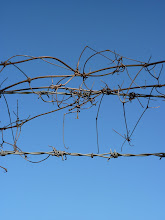Onagawa part 3 Reconstruction April 10th/11th 2013
There is a lot of detail in these photographs, please click on them once and then a second time so you can see it all more clearly.
I wondered how do you rebuild almost a whole town from scratch ?
During my guided tour I was given some facts,
The Tsunami was over 20 meters high when it hit the centre of town ( the maximum height recorded in the area was 43 meters on a small island just off the coast)
76.3 % of households were fully destroyed
The level of all the land dropped by 1 meter leaving the possibility of flooding for surviving buildings near the sea. So these had to be demolished .
Before any buildings can be built the level of the land must be raised by several meters.
The destruction of an entire town and the demolition of damaged buildings created a huge amount of rubble. 360,000 tons of rubble was created in Onagawa alone, equivalent to 90 years worth of garbage from the town. 300,000 tons of this is being recycled, sorted into type ( wood, metal, concrete etc. ) then graded or crushed to size and used as landfill to help raise the ground level.
From the rooftop of the Maskar building and from the hill by the hospital I could get a good view of this work taking place. Quite a revelation to realise that two years and one month after the disaster people still haven't been able to start erecting new buildings.
The process of raising the land seems to involve the casting in situ of huge concrete blocks as can be seen in the first picture.
In this shot it looks like shafts are being drilled and foundation piles being dropped into the ground.
In the foreground you can see lines of the huge concrete castings and in the background an area that has been raised by recycled soil/rubble covering the blocks. Eventually the roads will need to be raised too.
The rubble recycling plant. You can see piles of soil and wood which seems to have been chipped.
More of the recycling plant equipment for grading and sorting the rubble. If you look carefully in the background you can see a Torii gate that seems to have survived the tsunami .
I think this machinery is mixing the soil aggregate from different recycled sources.
A couple more views
A close up of the recycled soil on the side of one of the huge piles seen above. It seems to contain a mixture of wood , scrap, soil and stone/concrete.
The tsunami traveled inland up the valleys so this land needs treating too, the last picture was a view from just in front of my hotel.
Labels: architecture, Japan, Miyagi, Onagawa, Photography













0 Comments:
Post a Comment
Subscribe to Post Comments [Atom]
<< Home